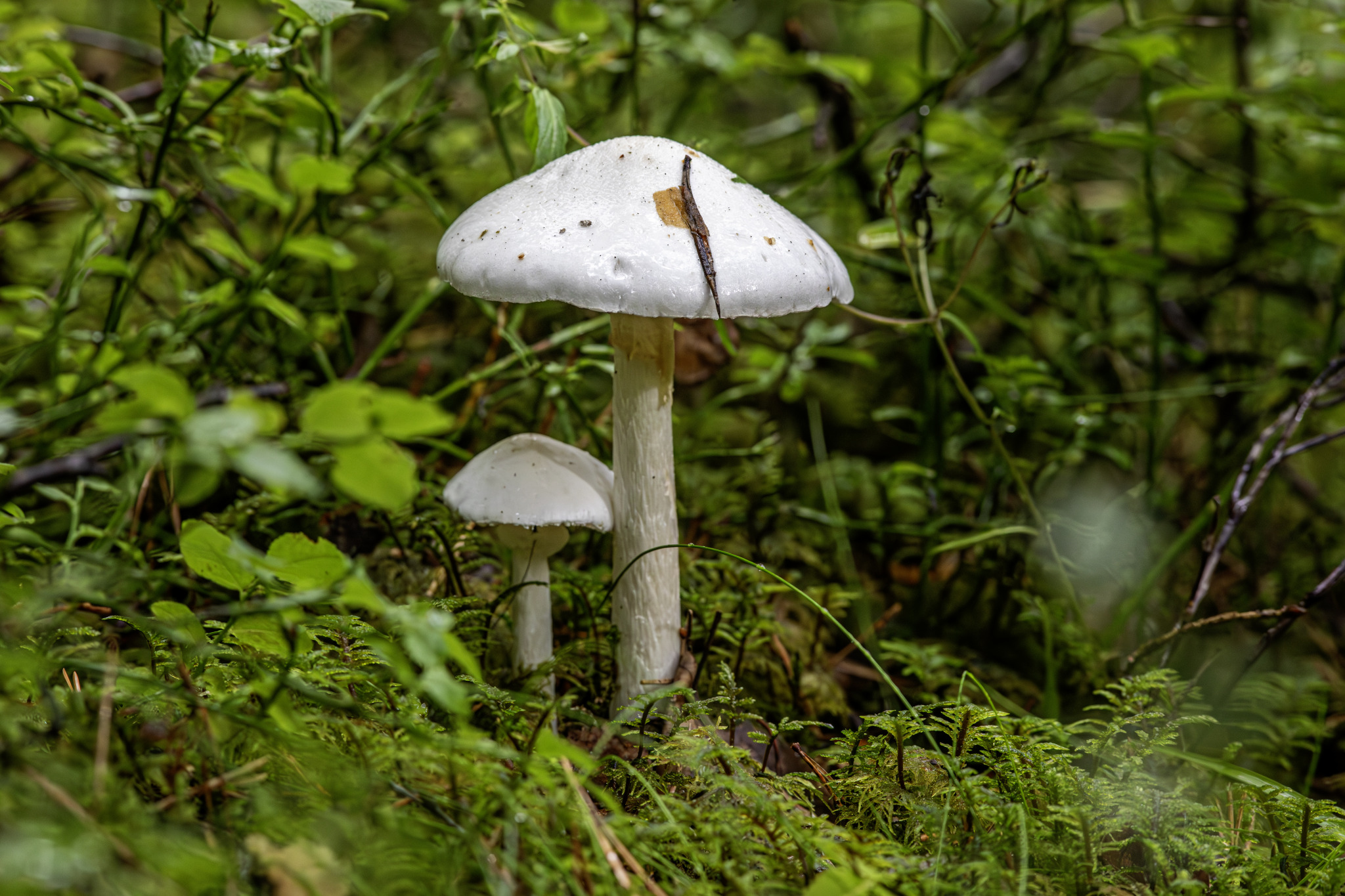The Death Angel (Amanita virosa) is a highly toxic mushroom, notorious for its deadly effects and its role in numerous cases of mushroom poisoning. It is a member of the Amanitaceae family, which includes several other highly toxic species, such as the infamous Amanita phalloides, or Death Cap.
Physical Description
Amanita virosa is a striking but dangerous mushroom, and its appearance can vary slightly depending on environmental conditions:
- Cap: The cap of the Death Angel is typically white to pale cream and can reach 4 to 10 cm (1.6 to 4 inches) in diameter. It is smooth and moist when young but becomes dry and more fibrous with age. The cap is often hemispherical when young and expands to a more flat or slightly umbonate shape as it matures. It may have fine, white scales on its surface, particularly when young.
- Gills: The gills are free from the stem, white, and densely packed. They are typically not attached to the stem and can be quite broad.
- Stem: The stem is white, slender, and can reach 8 to 15 cm (3 to 6 inches) in height and 1 to 2 cm (0.4 to 0.8 inches) in diameter. It is smooth and has a bulbous base, often surrounded by a white volva (a sac-like structure at the base). The stem is sometimes slightly swollen near the base.
- Spore Print: The spore print of Amanita virosa is white, which helps in distinguishing it from some other mushrooms.
- Odor and Taste: The mushroom is typically odorless or has a faint, somewhat unpleasant smell. It does not have a distinctive taste.
Distribution and Habitat
Amanita virosa is found across temperate regions of Europe, Asia, and North America. It typically grows in forests and woodlands, often under broadleaf trees or conifers. The mushroom is usually associated with soil that is rich in organic matter.
Toxicity
Amanita virosa is extremely poisonous and can be fatal if ingested. The primary toxins in this mushroom are amatoxins, which inhibit RNA polymerase, leading to cell death and severe liver and kidney damage. Symptoms of poisoning can include:
- Early Symptoms: Nausea, vomiting, abdominal pain, and diarrhea, which can appear within 6 to 12 hours after ingestion.
- Delayed Symptoms: After an initial period of apparent recovery, symptoms can progress to severe liver and kidney damage, leading to jaundice, confusion, and organ failure. This phase typically begins 1 to 2 days after ingestion.
Treatment
Immediate medical attention is crucial if ingestion is suspected. Treatment often involves:
- Gastrointestinal Decontamination: Inducing vomiting or administering activated charcoal to limit further absorption of toxins.
- Supportive Care: Managing symptoms and supporting liver and kidney function.
- Antidotes: Some treatments may include medications that can counteract the effects of the toxins, such as silibinin (an extract from milk thistle) and N-acetylcysteine.
Identification and Prevention
Proper identification is critical to avoid accidental poisoning. Key characteristics of Amanita virosa include its white cap, free gills, and the presence of a volva at the base of the stem. However, many mushrooms look similar, so it is advisable to consult an expert or use a reliable field guide for identification.
Summary
The Death Angel (Amanita virosa) is a highly toxic mushroom with a dangerous reputation. Its white appearance and association with forested environments make it easily mistaken for edible species. The effects of its toxins can be severe and potentially fatal, emphasizing the importance of careful mushroom identification and immediate medical attention in cases of suspected poisoning.
Views: 1432
Subscribe to the newsletter:
